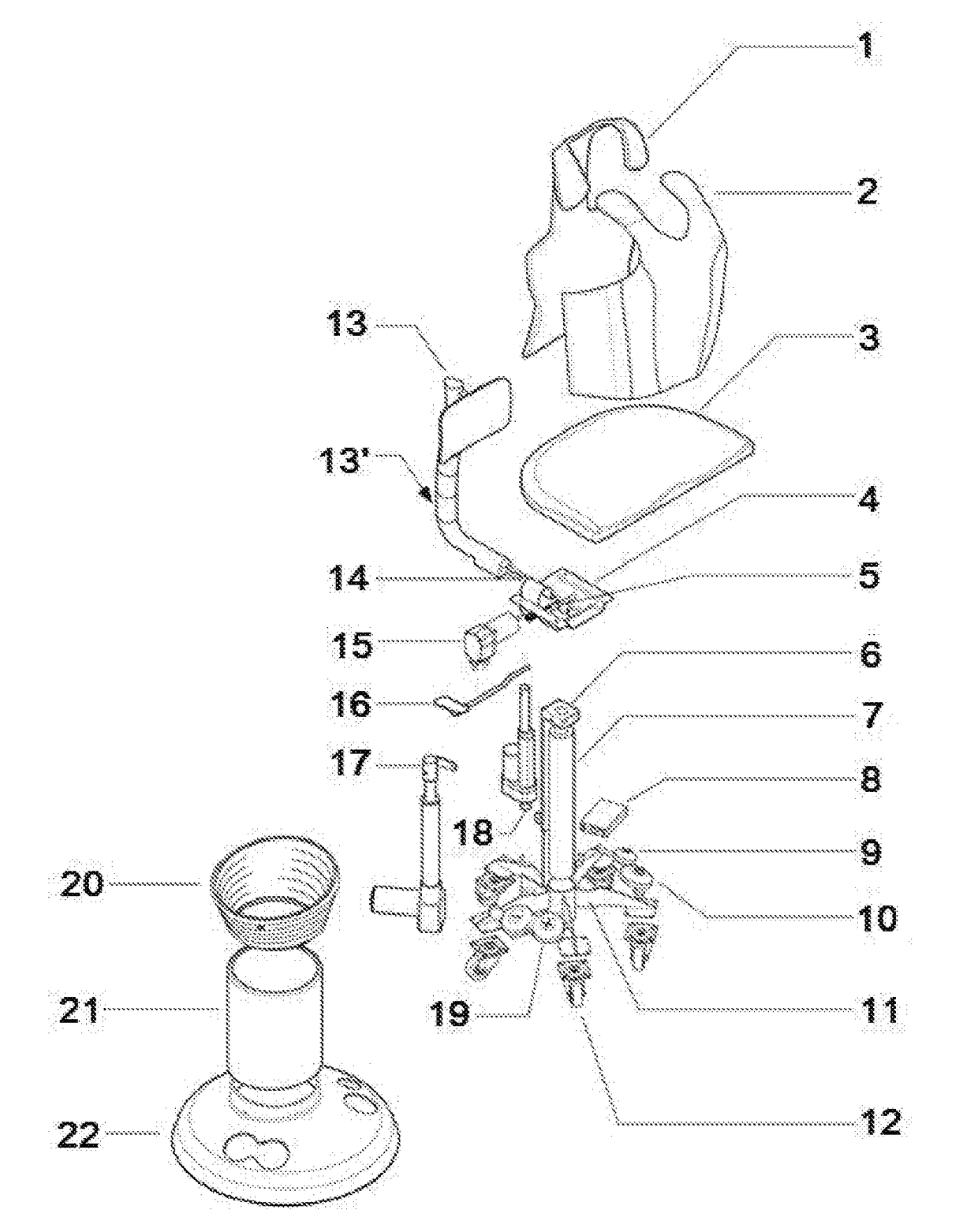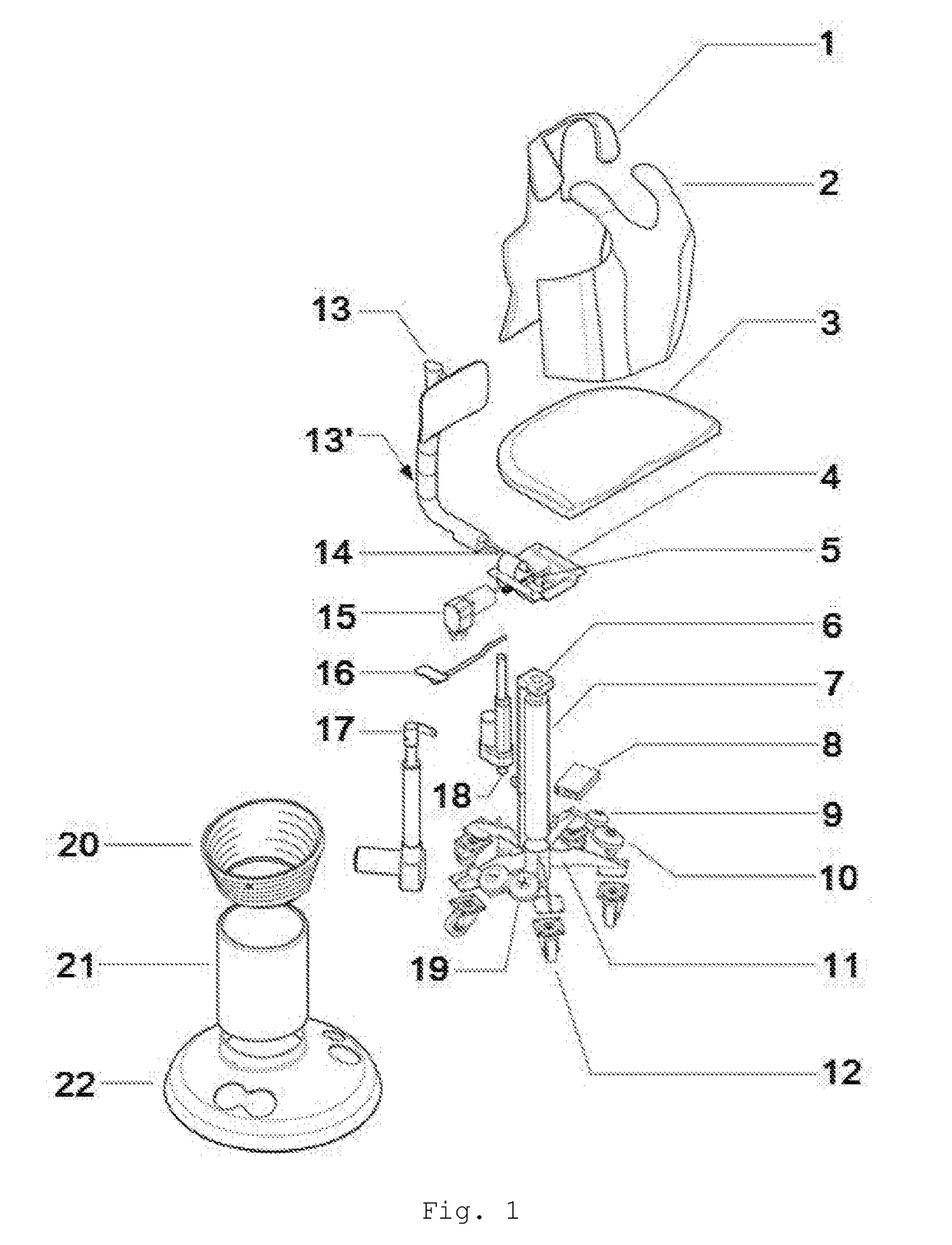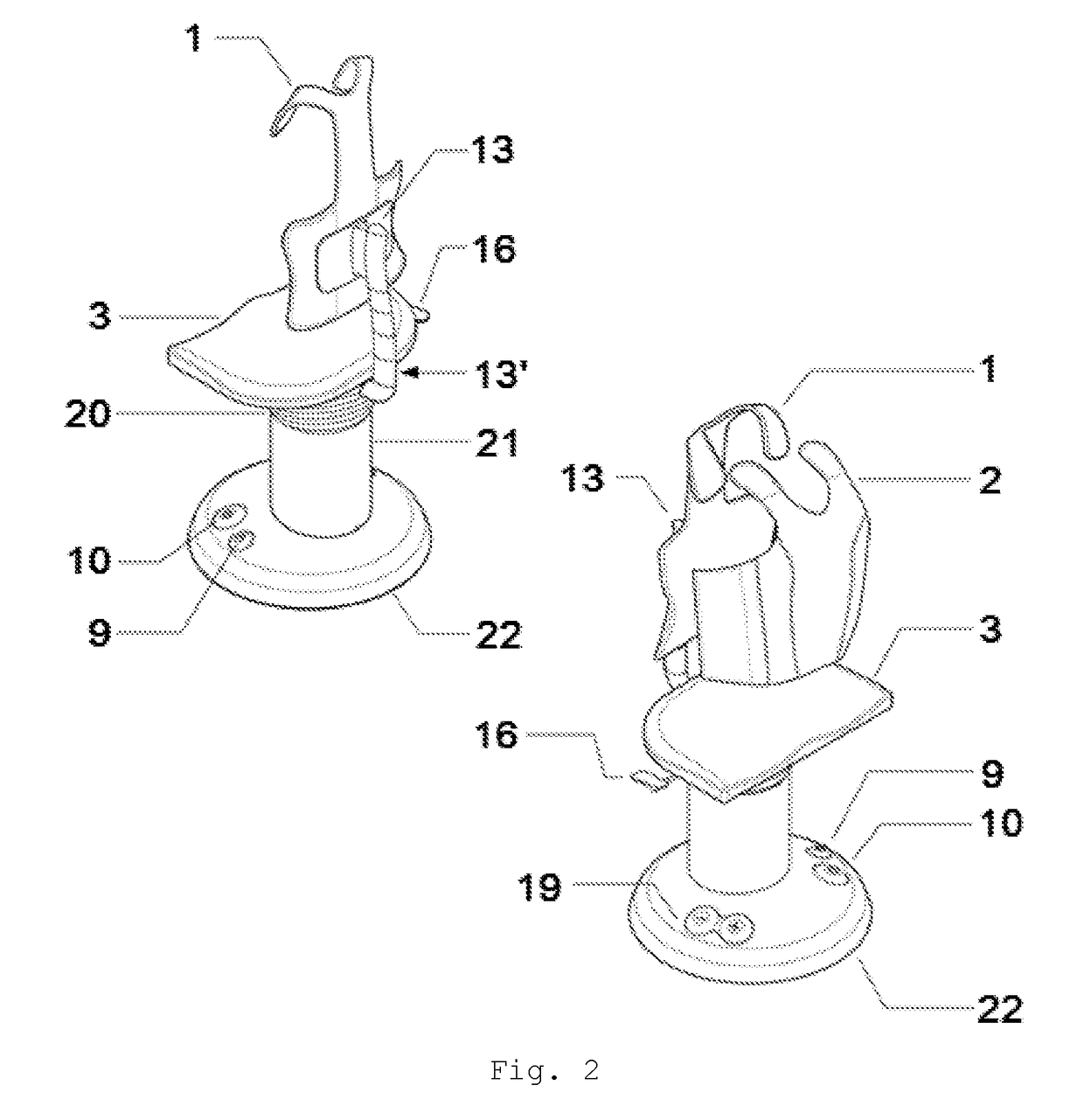Body support device for surgery
a support device and body technology, applied in the field of surgery, can solve the problems of affecting the patient's recovery, affecting the recovery process, and the surgeon's body posture, and the solution available on the market addressing this issue for surgeons lack efficient support for the torso, so as to relieve the symptoms of fatigue, maintain complete freedom of the upper limbs, and minimize the effect of bone and muscle structur
- Summary
- Abstract
- Description
- Claims
- Application Information
AI Technical Summary
Benefits of technology
Problems solved by technology
Method used
Image
Examples
Embodiment Construction
[0092]Referring to the drawings, herein are described an optional embodiment in more detail, which however is not intended to limit the scope of the present application. The embodiment refers to the use of the body support device in ophthalmological surgeries in operating room.
[0093]The present technology discloses one torso support (1) which is placed on the surgeon's torso, allowing freedom of movement of the upper limbs. The shape of torso support (1) is designed from scanning the surgeon's back and corresponds, approximately, to a prosthesis for the user's back which provides precise attaching and correction of postural habits shown to cause pain and muscle fatigue.
[0094]In the base of the torso support (1) there is a covered semi-hard surface, as well as the part of the attachment system to the torso support (1) that makes it possible to attach the posterior support (13). The semi-hard surface is divided in two parts and distinguishes the dorsal and lumbar regions, which are su...
PUM
 Login to View More
Login to View More Abstract
Description
Claims
Application Information
 Login to View More
Login to View More - R&D
- Intellectual Property
- Life Sciences
- Materials
- Tech Scout
- Unparalleled Data Quality
- Higher Quality Content
- 60% Fewer Hallucinations
Browse by: Latest US Patents, China's latest patents, Technical Efficacy Thesaurus, Application Domain, Technology Topic, Popular Technical Reports.
© 2025 PatSnap. All rights reserved.Legal|Privacy policy|Modern Slavery Act Transparency Statement|Sitemap|About US| Contact US: help@patsnap.com



